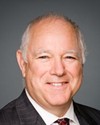Thank you very much.
Good morning, Mr. Chair and committee members. It is indeed a pleasure to be here this morning and to have the opportunity to speak to you about Veterans Affairs Canada as we enter what is a very exciting but challenging time in our history. I am pleased to appear before you with Bernard Butler, who has been introduced.
We'll have an opportunity this morning to talk to you about the department in terms of its basic structure and some information that I think you'll find valuable in terms of how we work, our budgets, etc. I'll move quickly through that; I know you've received a deck that outlines that information for you. Then what we really want to talk about is the progress and improvements we're making as we serve our veterans.
When I mention that this is a very challenging time, I say that because at this point, for the first time in our history, we're serving more modern-day veterans, those who have served after World War II and the Korean War, than traditional veterans. They have different needs and expectations, and it's very important for us as a department to make sure we're responsive to that.
Very quickly, I will speak a bit about our organization. I know you're familiar with our mandate, but we're proud to say that since 1919 we have served to provide for the needs and benefits of veterans in Canada. Second, we make sure that their actions are commemorated appropriately, both in Canada and internationally.
Within our organization, our minister has three main elements reporting: the deputy minister, of course, who is the chief administrator of our department; the veterans ombudsman, established in 2007, who provides an independent review of issues in the department, works very closely with stakeholders, and ensures that those issues are brought forward to us; and the Veterans Review and Appeal Board, which has been in place for many years and provides a vehicle for those veterans who have an issue or are dissatisfied with a decision on their disability program to bring it back to the department for a review.
I want to talk a bit about our staff. We have about 3,800 full-time equivalents. That's a bit of a bureaucratic term, but basically those are the people across the country who are there to provide services to veterans. What's important for this number is that of those, over 70% provide direct client service. So those are the people who are on the ground, who are providing or administering direct benefits.
Our head office is in Charlottetown, which makes us unique among federal departments. We also have 2,000 employees across the country working within our regional and district offices. These are the employees who are the face of our department. They're the case managers and other health professionals who work one-on-one with our veterans, ensure that their needs are understood and fully met, and make sure they get the benefits and services they need.
Our portfolio spending for this year is upwards of $3.5 billion. What's important in that number is that 90% of that is direct transfers to our veterans. What that means is that 90% of it is for disability pensions or disability awards or direct treatment--things like drugs, audiology services, dental care. Those are the services that we provide to our veterans. So of the $3.5 billion, 90% of it goes directly to the veterans. Only 10% of our overall budget goes to support overhead, which is generally seen as being salaries and regular operating costs to maintain a department. This is a very small overall percentage.
I want to talk now about demographics, because this is key to our story today. Our demographics are changing dramatically. There's a chart on page 6 of the deck. Let me just talk about it in terms of what it means to us and what it means to you, as committee members, in terms of understanding what we're dealing with now.
This year, as I mentioned, for the first time in our history we're serving more modern-day veterans than our traditional war-service veterans. The numbers are fairly equal, but there are more modern-day veterans. By 2015 there will be three times more modern-day veterans than traditional war-service veterans. These two client groups have different needs and expectations, and our department has to be set up properly to meet those needs and expectations.
We know that you're quite familiar with some of the needs of our department going way back, but in more recent history we've received a lot of direct feedback, input, and criticism that we weren't there and ready to meet the needs of our modern-day veterans. That's one area we've worked on very hard. We've made good progress and we want to speak to that again this morning.
When we talk about our modern-day veterans, we know they have very complex needs. We know that they've served as career soldiers and that in many cases this was their occupation. They wanted to stay in the military. Those who are leaving need to be transitioned. They need help with re-adapting or transitioning to civilian life. That's where Veterans Affairs first meets them, and it's a very important point in our interaction with them.
As for traditional war veterans, it is very important that we're there for them right now. In many cases they're facing issues of aging and, sadly, in many cases, end-of-life issues. We want to be there to support them and their families.
So how do we serve them? It's about our people and the people on the ground. When I talk about the changes we've made, as someone in service delivery, I'll be talking about the changes we've made that make it better on the ground.
I mentioned 2,000 employees who provide direct client service. We have 60 locations across the country. These are where people can walk in and get help and meet a case manager or other professionals to assist them.
We have a very new and important service delivery model in partnership with DND, the Department of National Defence, with integrated personnel support centres. We're now co-located with them on bases and wings across the country. We actually have a presence at over 30 sites with them. We have 24 formal arrangements on the ground and over 100 staff working on these bases. That's where DND and VAC can work together, right from the first step of an individual wanting to leave the military and therefore build that relationship and ensure a smooth transition.
As part of service delivery, we're overhauling everything we do. We're looking at every step in our processes. We're cutting red tape. We've reduced turnaround times for major programs, which is going to show up with veterans knowing and feeling that they're getting better service. We're getting more front-line staff and better delegation of authority, so that staff can make decisions faster. We're going to align our resources with where we need them and are adding resources across the country where needed. We're also building our partnership with DND, a cornerstone of the work we will continue to do to make sure there's a transition between the two departments. We won't use the word “seamless”; it's never going to be seamless, but we're making it better.
At this point, Bernard is going to give an overview of our new programs and services.





